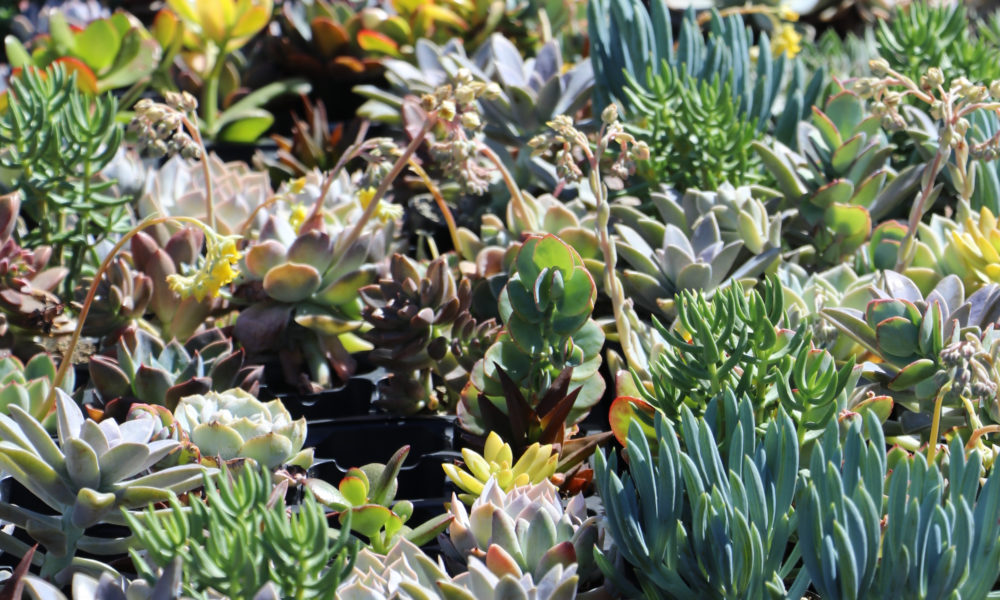As this busy semester comes to an end, students are in need of a calming distraction. A temporary escape can be found by taking care of plants.
Grocery stores, farmer’s markets and hardware stores are stocked full of interesting plants that most students stray away from because they don’t think they have the time or resources to keep them alive. Fortunately, there are options for students to have plants without the fear of killing them during the busy months of the semester.
Drought tolerant plants are commonly seen littered all throughout Southern California in restaurants, coffee shops, shopping malls, parking lots and even the Long Beach State campus.
[media-credit name=”Ryan Guitare ” align=”alignnone” width=”350″] [/media-credit]
[/media-credit]
“You have to remember to let the light in, you have to remember you have one, so if anything it takes you out of your head for a second,” said Brita Lemmon, owner of Brita’s Old Town Gardens in Seal Beach. “Having that thing you have to look in on and take care of a teeny bit can help you shift focus from all the angst of school.”
Drought tolerant plants are the go-to for busy students who think they don’t have the time or who frequently forget to water their plants. These plants require little water and are low maintenance, making the the perfect option for busy students.
Succulents and cacti are popular drought tolerant plants, offering a number of varieties that are easy to plant and take off on their own once fully adapted to their surroundings.
Succulents can survive unfavorable weather conditions, thriving best in desert-like and dry regions. While being hardy for students, succulents are also affordable options, with the base rate for 2-inch succulents starting at $2 to $3.
The Agave variety is a great and sturdy recommendation for students looking to purchase their own succulents, such as the aloe vera plant, which helps relieve a sunburn.
“Most people think a drought tolerant plant is obviously a succulent and cactus because they like to take the drier side before they are watered again, but the plan is to make it that way when established,” Kevin Kim said, Manager of Armstrong Garden Center in Long Beach. “No matter what when the plant is starting out they need water to become fully established.”
While most plants flower and die, for succulents and cacti, it often means rebirth, allowing for the plant to reproduce and spread for endless gardening possibilities.
If you are not fond of cacti or succulents, there are a variety of drought tolerant options for houseplants, various ferns and shrubs that are great plants for students who are dorming or renting.
Lavender, bamboo, spider plants and philodendron are all drought tolerant varieties that are not members of the succulent and cactus family, but are still difficult to kill. Indoor plants however, do require a little more attention because of how much sunlight and water the plant gets.
[media-credit name=”Nikki Nelsen | Daily 49er” align=”alignnone” width=”475″] [/media-credit]
[/media-credit]
While a majority of fruits and vegetables require a lot of sunlight and space to grow, there are choices for students who may lack the space and time to grow their own food.
Tomatoes and peppers can be good possibilities for students. Students can also grow indoor herb gardens if they have the proper indoor lighting to support them.
“Fruits and vegetables are a bit tougher, but having a nice smelling herb that you can break off a little mint and put it in hot water and make some tea is kind of like having a fruit and vegetable garden,” Lemmon said.
Depending on if you chose indoor or outdoor gardening, location can be everything. Most plants require the proper amount of water and sunlight and the right environment to ensure they will thrive.
LBSU offers Grow Beach, an organic garden on campus that allows students, staff and faculty the opportunity to grow and cultivate their own food and plants. Plot rentals are available to students and faculty offering 5-feet by 5-feet plots that charge a yearly fee of $25 dollars for students and $50 for faculty and staff.
The city of Long Beach also has a variety of community gardens where members can purchase a plot of land to garden and maintain.There are a variety of local community gardens such as the Zaferia Junction Community Garden and the Three Sisters Community Garden.
With all of the benefits that plants can provide along with all of the opportunities on campus and around Long Beach, there is really no reason not to invest in living and drought tolerant plants.
“Every plant you grow whether you make it live or kill it, you are going to learn what to do on the next one, there is really no perfect plant, it’s the one that makes you happy,” Lemmon said.




